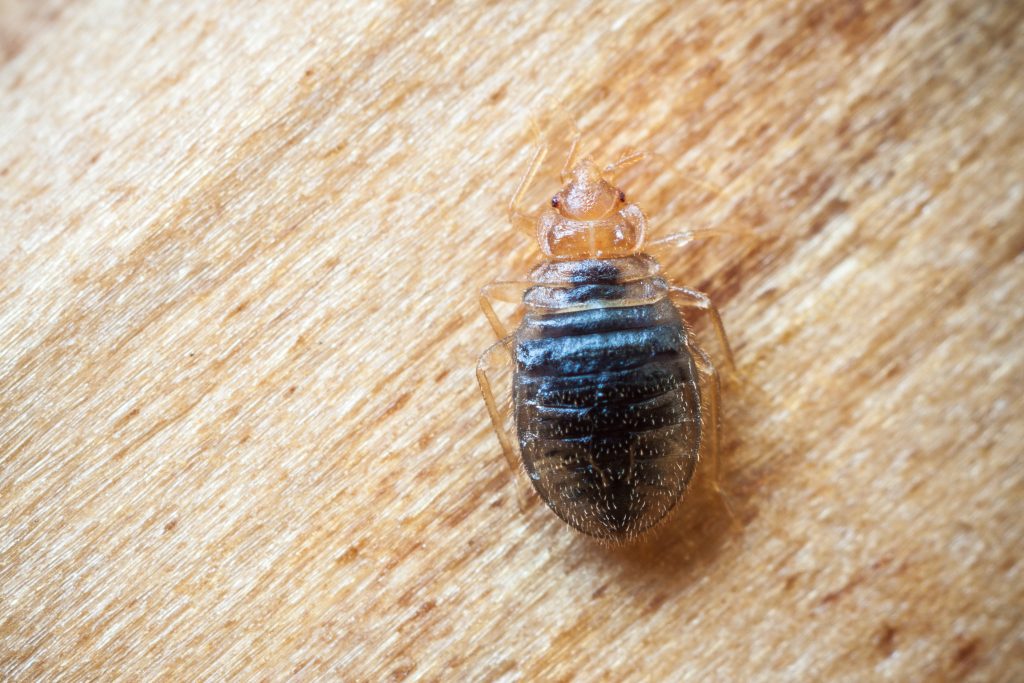Co-authored by Joelle Olson
Sixty years ago, bed bugs were eradicated from the U.S., largely due to the use of DDT, a once common and very potent insecticide. Since DDT was banned by the EPA in 1972, bed bugs have reemerged. Their populations are again flourishing due to increased domestic and foreign travel and discontinuation of older, more potent insecticides. While bed bugs have not been shown to transmit diseases, these nocturnal bloodsucking insects can harm businesses by upsetting customers, generating bad publicity, triggering legal issues, and causing room downtime.
Hoteliers can confront bed bugs proactively by understanding the biology and behavior of this persistent pest, and what it takes to identify and eliminate them. Proper treatment of bed bug infestations will help minimize a property manager’s liabilities, protect their brand, and optimize guest satisfaction.
Ultimately, a successful bed bug service plan will include the following elements:
- Thorough inspection to locate bed bug harborage sites;
- Thorough treatment of infested and potentially infested areas;
- Mandatory follow-up treatments and inspections; and
- Hotel’s commitment to quarantine items in infested rooms, dispose of and replace infested items, and close impacted rooms to allow access to treatment areas.
There is debate in the pest control industry regarding the ideal bed bug treatment protocol. EcolabTM Pest Elimination scientists have analyzed multi-versus single-treatment protocols, along with the importance of inspecting and treating adjacent rooms.
Treatment Frequency Matters
Most pest control professionals and industry experts agree that multiple treatments are necessary to control bed bug infesta- tions, due to bed bugs’ biology and behavior. Direct contact between a treatment application and a bed bug is the ideal way to eliminate this pest. However, bed bug adults and their eggs are often located in areas that are difficult to reach with either chemical or non-chemical control procedures(for example, under switch plates and in electrical outlets).
An additional complication to effective bed bug treatment is that some insecticides labeled for bed bugs provide poor residual control, and bed bugs can become highly tolerant of insecticides. Multiple treatments therefore increase the likelihood that bed bugswill come in contact with a treated surface and obtain a lethal dose.
Targeting all life stages is critical
A multi-treatment protocol is more effective because it targets the reproductive life cycle of bed bugs. Bed bugs will typically complete the life cycle from egg to adult within 6 to 8 weeks. The following computer-based test models compare a single treatment to multiple treatments, revealing the benefit to addressing eggs and newly emerged nymphs, and what could occur if a critical treatment step is skipped.
As these science-based results indicate, if one or more treatment steps are missed, the efficacy of the bed bug treatment program is compromised. The primary reason single-service protocols fail is that any adults that survive the initial treatments may continue laying eggs, increasing the risk that bed bug populations will rebound. A single service may also fail due to limited product efficacy (both chemical and non-chemical practices), likelihood of product degra- dation,and the potential to overlook critical areas.A multi-treatment protocol provides consistent efficacy,even in worst-case scenarios. It also addresses unknown variables such as inadequate coverage of product(i.e.,missed spots) and bugs hiding deep within recesses.
Adjacent Rooms are Impacted
Along with using a multi-treatment protocol to eliminate the primary infestation, all rooms adjacent to an infested room (above, below and to the sides) should be inspected. If any of these rooms are found to be infested, the same multi-treatment protocol should be used, and additional adjacent rooms inspected.
Rooms adjacent to an infested room are at risk because the repellent nature of some available treatment products may cause bed bugs to migrate through electrical outlets and conduits, common plumbing, and crevices such as expansion joints. Adjacent rooms also provide harborage areas for bed bug populations. Bed bugs are reclusive by nature, which causes them to seek harborage in cracks and crevices – even spaces as small as 1.0 mm. This behavior allows them to easily migrate through wall and ceiling joints that may appear seamless, reinforcing the need for multiple treatments.
As avid hitchhikers, bed bugs may also make their way to adjacent rooms via housekeeping staff and their equipment, who
then become unknowing “carriers” between infested and non-infested rooms. This is why it is important to train staff how
to recognize the signs of a bed bug infestation, and leave all items used to clean the guestroom inside the room if the
presence of bed bugs is suspected.
Conclusion
The serious nature of bed bug infestations and the financial consequences of ongoing bed bug issues mandate a thorough
and proactive approach to inspection and treatment. There is no middle ground when it comes to confronting this pest. Bed
bugs must be quickly eliminated from infested facilities, and hoteliers are encouraged to form strong, ongoing partnerships
with adequately trained and certified pest management professionals. Hoteliers should have a plan in place, train hotel staff to inspect rooms as part of daily room cleaning, and be ready to respond with an intensive, multi-treatment protocol that targets all life stages and every room at risk.

